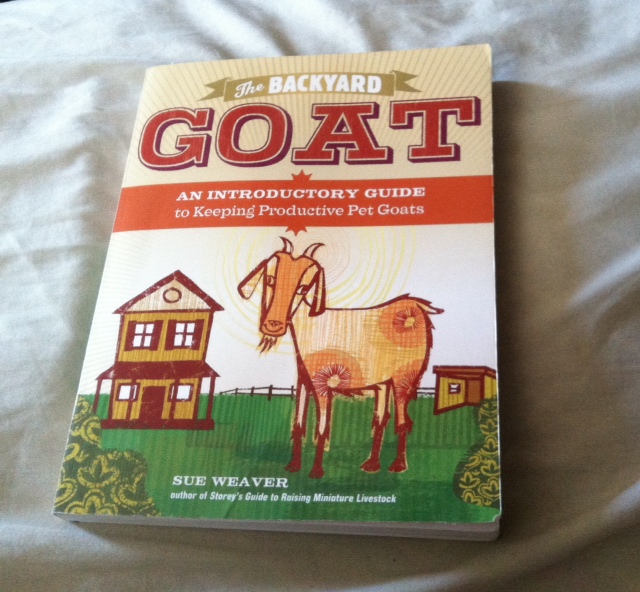No matter how many books, one reads or videos ones watches, breeding a goat is no small thing. It’s hard, and it smells, and there’s nothing cute or remotely romantic about getting your goat a “boyfriend”. But there are some things that I’ve learned, and hope to share. First off, if you are a beginner like myself, research is your friend!!

First thing I found was a buck to service my doe. I was limited in my search because of my lack of a car and finances. Many bucks cost money to either buy, or in my case lease. I lucked out by meeting Thomas and Bailey from Ardelia Farms in Glover VT. They have a herd of golden Guernsey goats, witch are small, with fairly good butter fat in the milk, and a beautiful golden color. Picking a buck is important, and differs from goat owner to goat owner. Behind my decision was to use a buck on the small side so the kid will be small for my does first time having a baby.

Things to look out for when breeding your doe.
-Good body conditioning, you want a buck that is in good health, not to thin and not to fat, with good legs and feet. You can tell a lot about a goat through his or her mother, the same things apply to finding a good buck. The farmers at Ardelia introduced me to Edgar’s dam (mother) to show me that she had a good udder. This is important for the future of the offspring. Avoid does and bucks that have more than two teats, this is undesirable. I knew a goat with three teats, and although she was really nice, milking her by hand was a pain in the butt.

Below are some links that I found helpful in understanding what a healthy doe would look like.
My own experience with breeding my doe was hard, I tried to follow everything that I read online, on books, or what others told me. When a doe is in heat, she acts differently, she might be louder, try to mount the other goats. Other things to look for would be a sticky tail and discharge. Nymeria was really quiet, and calm, so the first thing I learned is to watch your goat like a hawk. I would sit in the pen with them and just observe her behavior so I could identify when she was acting odd. Goat heats happen about every 15 days and can last ether 12-48hrs, so I was really nervous that I would miss it. A calendar is your biggest friend I marked they day I think was Nymeria’s first heat, and then estimated when her next one would be. One farmer told me he always missed heats until he remembered to count the day the animal was in a heat as day 0.
Another tip is to house the doe next to a buck, sometimes his smell can push a doe into closer heats, because Summer who is a castrated male lives with Nymeria, I had the buck separated and would leave her in his pen for part of the day. This kept him safe from Summer because of his small size and lack of horns. Eventually they became used to each other and he was integrated into the herd. I ended up using Edgar as my heat detector. On a normal day he wasn’t really interested in Nymeria and would leave her alone, but when she was in heat and ready to breed, he would follow her around. A pregnancy test can only be taken 30 days after breeding, so keeping notes on the calendar of when I saw her be bred was very important. I kept Edgar for a little over 30 days to make sure Nymeria was bred and wasn’t going into any other heats. Since she was quiet in her heats, and this was my first time breeding any animal I took the option and bought a pregnancy test, that you can send into a lab. This is where I bought mine: http://bobwhitesystems.com/collections/natural-livestock-care/products/biopryn-pregnancy-detection-for-cows-and-sheep-goats
I had a teacher help me draw the blood, and I suggest if you have never done this before to get help, by a professional or someone who knows how to draw blood from and animal, and don’t forget your clippers!!! After that I followed the directions in the booklet, sent my blood in and within the day they received it, I got my answer the next day through email. And it was great news, Nymeria is Pregnant!! And expecting a kid in early March.




